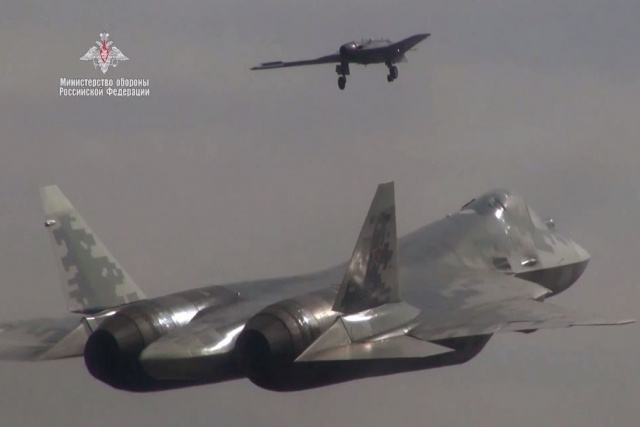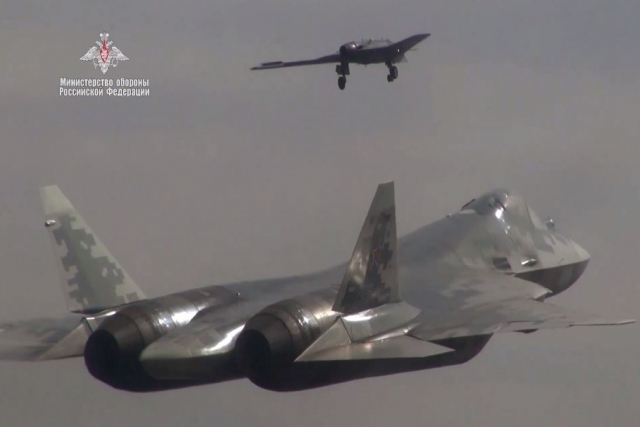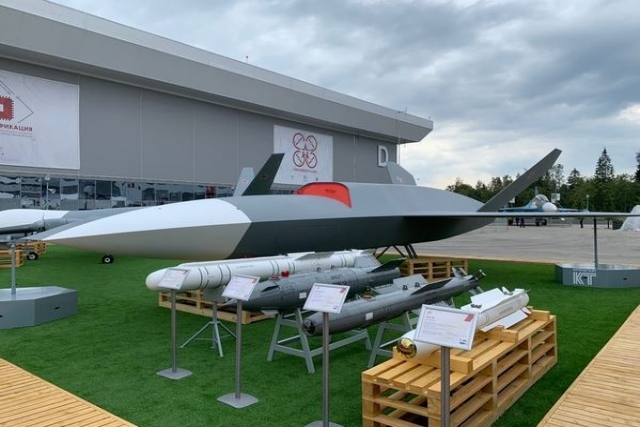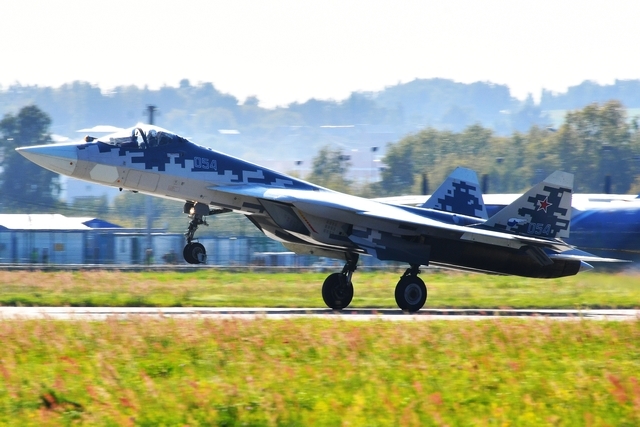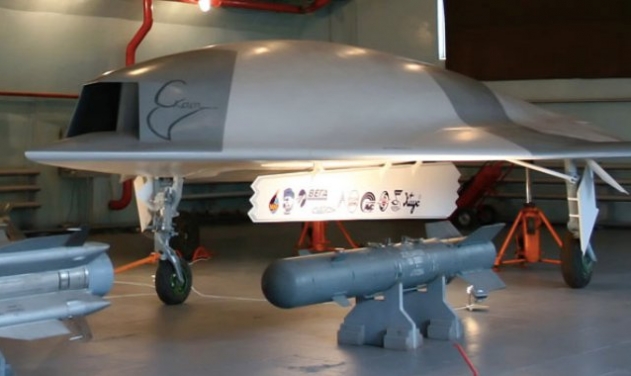Russian ‘Okhotnik’ Stealth Drone Tested with Air-to-air Missiles
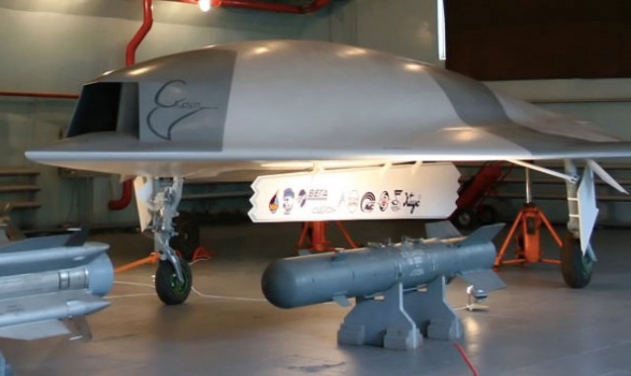
The Russian military recently conducted test launches of air-to-air guided missiles from the heavy stealth attack drone "Okhotnik" (Hunter) creating a new role for it as a fighter-interceptor to accompany the Su-57 fighter jet.
Conducted at the Ashuluk training ground, the tests will make the stealth drone a major threat to enemy fighter jets due to its ability to get close to them and fire its missiles nearly undetected, RIA Novosti reported quoting sources from the military-industrial complex.
“The flights will make it possible to assess the coupling of the drone's avionics with missile guidance systems and the lead Su-57 aircraft," the sources explained.
The Okhotnik has been developed to function as a ‘loyal wingman’ to the Su-57 stealth fighter where the manned fighter will control several Okhotnik drones which will in turn engage the enemy without putting the manned aircraft in harm’s way.
Prior to the tests with missiles, the "Okhotnik" had already performed a number of flights to verify its flight parameters and the operation of the main onboard systems, the sources said.
During the tests conducted at the Center for Combat Training and Combat Use of the Russian Aerospace Forces at the Ashuluk training ground, several flights of the Hunter were performed with inert guided air-to-air missiles. Such missiles in the combat version are designed to destroy other aircraft," the source said.
Inert missiles equipped with infrared and radar homing heads were used on the Okhotnik. "The inert missiles have a body and all the electronics of the corresponding missile, but without the engine and warhead," the source said.
The Okhotnik, developed by the Sukhoi Design Bureau , is to become the first heavy drone with shock functions in the Russian Aerospace Forces. The device is made according to the "flying wing" scheme with the use of materials that reduce radar signature.
The strike UAV has a length of 19 meters, a wingspan of 14 meters, its take-off weight is 20 tons, and its maximum speed is about 1000 kilometers per hour. The first flight of the Hunter took place on August 3, 2020 and lasted more than 20 minutes.
